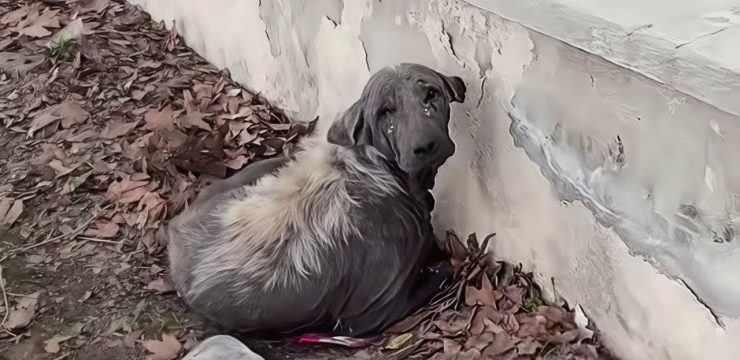If there’s one positive thing that has come out of the rise of social media, it’s the ability for people to share critical information faster than ever before. In a world where new risks and dangers can appear out of nowhere, this digital word-of-mouth system can make the difference between awareness and tragedy. One powerful example of this came from a mother named Andrea Pergola, whose quick thinking—and quick posting—helped alert thousands of families to a hidden threat most of us would never expect.

Andrea’s 15-year-old son, Logan, was participating in volunteer work when something seemingly minor happened. While collecting tree branches outdoors, Logan felt a sharp sting on his arm. It didn’t seem like much at first—just a quick, momentary pain—but within minutes, a strange red pattern began to form on his skin. The mark looked like a red grid or mesh, spreading quickly. Soon, it transformed into a painful rash that moved up his arm toward his chest, and the discomfort escalated into an intense burning sensation.
Logan’s condition began to deteriorate rapidly. Along with the rash, he became dizzy and pale. Andrea, alarmed and unsure of what had just happened, sprang into action. She tried home remedies like washing the affected area and applying garlic, which is believed by some to help draw out venom from bug bites. But nothing worked. Logan’s pain only intensified, and Andrea realized this wasn’t something they could handle at home.
That’s when Logan’s grandfather, who was nearby, took it upon himself to find the creature responsible. He put on thick gloves for protection and went searching. Eventually, he found a fuzzy, seemingly harmless caterpillar and secured it in a bag for a closer look. At first glance, the caterpillar appeared “cute” and non-threatening—just a soft, furry bug like the kind many children might pick up without a second thought. But appearances can be dangerously deceiving.
After a quick search online, Andrea discovered that this wasn’t an ordinary caterpillar. It was one of the most venomous caterpillars in all of North America—known for causing extremely painful reactions in humans. Though it’s not native to Florida, where the incident occurred, it is typically found in Texas and seems to have spread beyond its traditional territory.
Realizing the seriousness of the situation, Andrea didn’t wait another moment. She rushed Logan to the nearest emergency room, where medical professionals began treating him immediately. It turned out that Logan had been stung multiple times, and simple over-the-counter remedies like Benadryl wouldn’t have been enough to address the severity of his symptoms. It took trained medical staff and proper intervention to stabilize him and begin the healing process.
Grateful that her son was safe but deeply shaken by the experience, Andrea decided to turn her fear into action. She took to Facebook to share her story, hoping it would prevent another family from going through the same ordeal. Her post went viral, reaching thousands of parents and caregivers who had never even heard of such a caterpillar before.
“Please research this caterpillar, be aware of it and make your kids aware of it,” Andrea pleaded in her post. “It is not native to Florida, but to Texas, and just happens to live here now. Please, if you are stung or your kid is stung, get to the ER and let them treat you. I can assure you—we didn’t realize he had been stung so many times, and normal over-the-counter Benadryl would not have treated this at home.”
Her message is a powerful reminder that sometimes even the most innocent-looking parts of nature can be dangerous. It’s also a testament to how quickly situations can escalate, especially when venomous insects or animals are involved. The caterpillar responsible for Logan’s reaction is called the puss caterpillar or asp caterpillar (Megalopyge opercularis), and despite its soft, fuzzy appearance, it’s covered in venomous spines that can embed themselves into human skin and cause extreme reactions.
What’s most alarming is that this creature doesn’t look threatening at all—if anything, it looks like a child’s toy or a harmless woodland critter. That illusion makes it even more dangerous, especially for children who are naturally curious and may not recognize the potential harm. Logan’s story serves as a cautionary tale to always be vigilant, even when dealing with creatures that seem gentle and safe.
The broader takeaway from Andrea’s post is the importance of awareness and education. Her experience shows how vital it is to know your surroundings, especially when you or your children are spending time outdoors. Learning about local wildlife—including bugs and insects—can give you the knowledge needed to prevent injuries and respond effectively if something goes wrong.
Moreover, the story demonstrates the life-saving potential of social media. What might have once remained a private incident now serves as a public warning, sparking curiosity and caution in people across the country. By sharing her son’s story, Andrea didn’t just protect her own family—she helped educate others, possibly preventing similar incidents from happening elsewhere.
In an age where online posts can sometimes seem trivial or superficial, this is a powerful example of how the internet can serve a greater purpose. Stories like Andrea’s remind us that platforms like Facebook and Instagram can do more than just entertain—they can inform, protect, and even save lives.
So, if you ever come across a fuzzy caterpillar that looks too cute to be true, think twice before touching it. Teach your kids to observe nature from a distance and to let you know if they experience any strange symptoms after being outside. And most importantly, don’t hesitate to seek professional medical attention if something doesn’t feel right. You never know—it could make all the difference.





